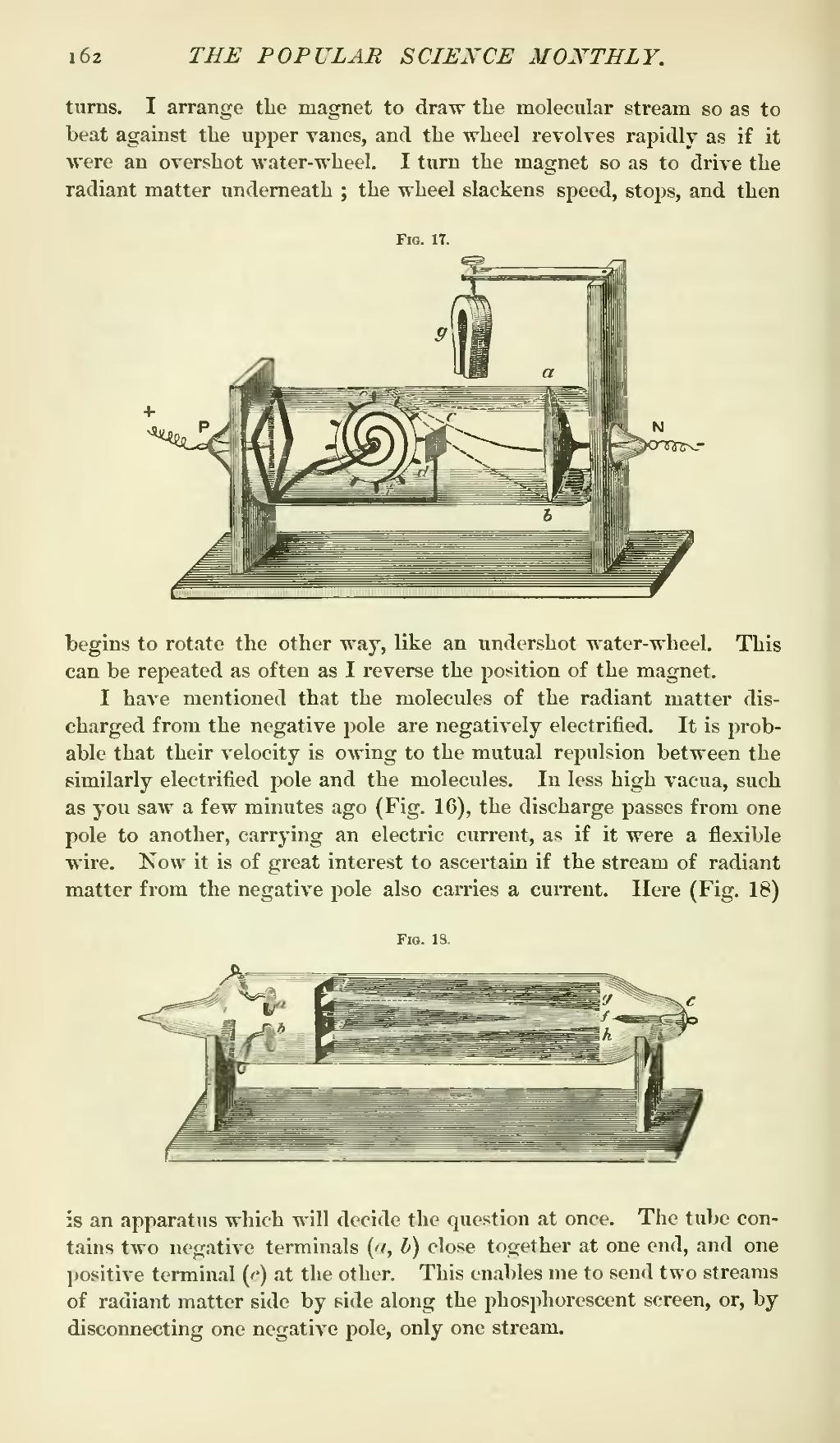turns. I arrange the magnet to draw the molecular stream so as to beat against the upper vanes, and the wheel revolves rapidly as if it were an overshot water-wheel. I turn the magnet so as to drive the radiant matter underneath; the wheel slackens speed, stops, and then
Fig. 17.

begins to rotate the other way, like an undershot water-wheel. This can be repeated as often as I reverse the position of the magnet.
I have mentioned that the molecules of the radiant matter discharged from the negative pole are negatively electrified. It is probable that their velocity is owing to the mutual repulsion between the similarly electrified pole and the molecules. In less high vacua, such as you saw a few minutes ago (Fig. 16), the discharge passes from one pole to another, carrying an electric current, as if it were a flexible wire. Now it is of great interest to ascertain if the stream of radiant matter from the negative pole also carries a current. Here (Fig. 18)
Fig. 18.

is an apparatus which will decide the question at once. The tube contains two negative terminals (a, b) close together at one end, and one positive terminal (c) at the other. This enables me to send two streams of radiant matter side by side along the phosphorescent screen, or, by disconnecting one negative pole, only one stream.

